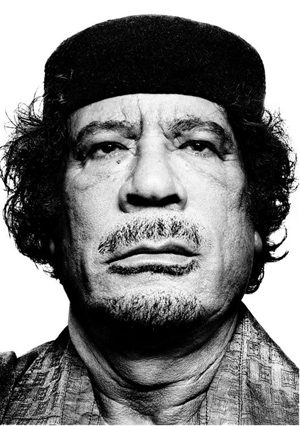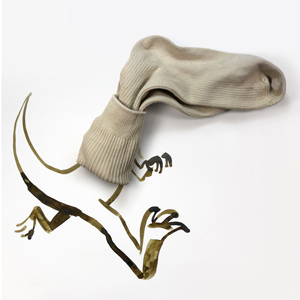‘Abstract’ Captures All Dimensions of Design
March 23, 2017
In late January, Netflix released a docuseries called “Abstract: The Art of Design.” For 45 minutes, it covers a different designer; from Christoph Niemann (the man who illustrates covers for the New Yorker) to Bjarke Ingels (the Danish architect extraordinaire), this docuseries digs into the importance of seven different design fields and how it impacts everyday life.
“Abstract is an eight-episode documentary series about creativity, about visionary designers who shape the world around us—from architecture to illustration, cars to typography,” Wired editor-in-chief Scott Dadich wrote.
While many types of design exist in the world, Dadich highlights only those artists he feels are most worthy of praise—those who might go unnoticed and those who bask in the spotlight. But he allows each individual to present their unique story.
“[Many design documentaries] look like a moving version of a coffee table book. You’ve got softly lit interviews, esoteric conversations, and subtle tracking shots of wide landscapes beneath unobtrusive music,” Dadich said. “We’re not doing that…Every episode stands as its own film, adapting the design sensibilities of our subjects.”
Three episodes showcase the different dimensions of design: Platon’s intimate, one-dimensional, black and white portraits; Bjarke Ingels and his four-dimensional living spaces that incorporate the natural environment; and Christoph Niemann’s mixture of one-dimensional doodles and 3-D objects.
1) Platon: Photography | One dimensional
“Platon’s fearless portraits capture the souls of world leaders and ordinary people,” Netflix said.
Platon gained his start as a photographer after working for British Vogue and John Kennedy Jr.’s political magazine George. Later, Platon cultivated a special relationship with Time magazine and has produced over 20 cover photos for them. He earned first prize at the World Press Photo Conference for his photo of Vladamir Putin.

Platon captures former Libyan dictator Muammar Gaddafi with stark coloring.
In 2013, Platon founded The People’s Portfolio, a non-profit organization that “aspires to create a visual language that breaks barriers, expands dignity, fights discrimination, and enlists the public to support human rights around the world,” according to Platon’s personal website.
And it’s Platon’s immense capability to empathize with others is what has granted him access to the world’s most powerful political and social leaders, including Barack Obama, Hugo Chavez and Muammar Gaddafi.
The Abstract episode walks through Platon’s creative process during a photoshoot with Gen. Colin Powell and shows what makes Platon an impressive photographer.
He lets his subject fill the entire canvas. Platon refuses to use fancy equipment (rather, he sticks to his Hassey 500 film camera and a few simple studio lights) and often removes the color from his portraits. This forces viewers to look at the subject’s eyes, truly feeling the emotion Platon is capable of drawing out.
2) Bjarke Ingels: Architecture | Four dimensional
As one of the youngest architects ever, Bjarke Ingels is reinventing the entire industry with his naturalistic designs.
“[He] unites function, fantasy and sustainability in ‘pragmatic utopian’ designs,” Netflix wrote.
One of these such designs is Ingels’ ski slope that sits atop a clean power plant. The Danish architect aims to create buildings that offer multiple uses to its inhabitants; he first became known for his work on a Boys Club.
“Through a series of award-winning design projects and buildings, Bjarke has developed a reputation for designing buildings that are as pragmatically and technically innovative as they are cost and resource conscious,” Ingels’ corporation website says.

Bjarke Ingels’ first building in New York provides consumers the perfect combination of appealing design and function.
But it’s not just his design prowess that has made people fall in love with the modern structures he builds. A former cartoonist, it’s his great optimism and constant affirmation that “yes is more” that make his buildings so powerful. He asks people what they wish existed in the
world, then creates it. For example, his first building in New York, the Via, is a residential pyramid with a section cut out of the middle that allows all inhabitants to look out over the Hudson River with an unobstructed view.
Ingels’ innovation was not always accepted, though. He was forced to break through the glass ceiling of traditional Copenhagen with his own glass structures. Once he broke ground in Denmark, Ingels’ designs spread across the world—he now has buildings in Europe, Russia, China, Greenland, America, India, Canada and Mexico.
3) Christoph Niemann: Illustration | One dimensional + Three dimensional
Perhaps the most interesting episode in the docuseries is illustrated by Christoph Niemann, an artist uncomfortable in front of the camera who brings his simple doodles to life and break the fourth wall.
Niemann is unafraid of any artistic mediums. From covers for the New Yorker to watercolor sketches on Instagram, he works to modify viewers’ perceptions of reality and invites his critics to interact with his work.

One of Niemann’s most popular posts on his Abstract Sunday Instagram account, this dinosaur expresses Niemann’s ability to seamlessly blend multiple dimensions on a page.
“Abstract” brings Niemann’s illustrations to life, mimicking the augmented reality cover he created for the New Yorker (the first of its kind).
Niemann has published work in the New York Times Magazine, Google, MoMA, the London Olympics, and has even drafted a sketch of the New York City Marathon while running in it (according to his website). He has published 14 books (many for children), created two apps and was inducted into the Art Directors Club Hall of Fame in 2010.
For all his success, Niemann prefers to keep to himself in New York City, absorbing the politics, economy, art and modern lifestyles present around him, his New Yorker profile said.
His quirky personality and abstract thought is palpable in this episode through the constantly changing setting and animated caricatures. Niemann was encouraged to create his ideal documentary, then he was invited to star in the production.
From dinosaurs made of socks to pyramids on the banks of the Hudson, “Abstract” shows the pervasiveness of design in our society. It’s great designers who are capable of capturing the world with their work, but those showcased in the docuseries have the gift of changing the world with their compositions.











